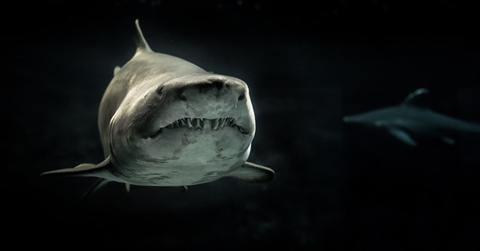Scientists Discovered A 'Shark Highway' And Are Working To Protect It
Video evidence of a shark pathway across the Pacific ocean may be the next step for conservationists trying to protect declining shark populations.
Updated May 17 2019, 5:56 p.m. ET
Biologists have long believed that different shark species traveled from Costa Rica all the way to the Galapagos and Cocos islands.
NPR reports that groups of scientists have been attaching electronic tags to sharks to try and track their journey for years, but they've finally made a breakthrough, identifying a "shark highway" that is used as a pathway from one part of the ocean to the other for over 16 species of sharks and fish, plus sea turtles and dolphins, who all use the route.
Now they're using their research to campaign for the 500-mile long path through the Pacific ocean to be protected.
Currently, the Cocos and the Galapagos have protected areas for some fish, but they don't extend to this so-called shark highway. A Costa Rican group called Fundación PACÍFICO, which is comprised of four different environmental funds, funded the recorded expedition now being used to make the case for a protected wildlife corridor.
The camera is similar in style to a GoPro, attached to metal frames hung with fish bait. The contraptions were called BRUVS, which stands for "baited remote underwater video system." Research vessels dragged the BRUVS through the water for two weeks, recording the abundant wildlife following behind.
Biologist Mario Espinoza said, “We actually documented over 16 species of sharks and fish, also sea turtles and dolphins…It’s really surprising to see that many animals.” But the most common marine creature they saw were sharks, including hammerheads, threshers, and silky sharks.
President of Fundación PACÍFICO, Zdenka Piskulich, told NPR that this is a huge breakthrough because they “finally we have visual evidence that there is a huge abundance in this area that needs to be protected, that there really is a highway.”
Part of why the highway has been difficult to document is that it isn't a straight line. Deep under the water are seamounts, a kind of under the sea mountain range.
"So this was the first time we actually documented animals using these seamounts," Espinoza says.
"We don't know exactly whether they are feeding or they're like stopping by or using these seamounts as navigation routes."
Sharks don't always stick to the seamounts either, and protecting the area would keep them out of fishing nets and lines, because it's an area where considerable tuna fishing takes place. A number of sharks are already considered endangered, like the hammerhead, and their numbers are declining overall.
"Once [sharks] get outside the protected area, its fair game," explained Lee Crockett of the Shark Conservation Fund. "And there's lots of high seas fishing for tuna. It's mostly long lines, and they catch a lot of sharks and a lot of turtles."
He added: "That's why we're excited about this as kind of the next step in conservation, to establish these corridors or swimways between these protected areas so they get complete protection."
There's a whole world under the sea that we're not even aware of, but it has a ripple effect across our ability to survive on this planet.
